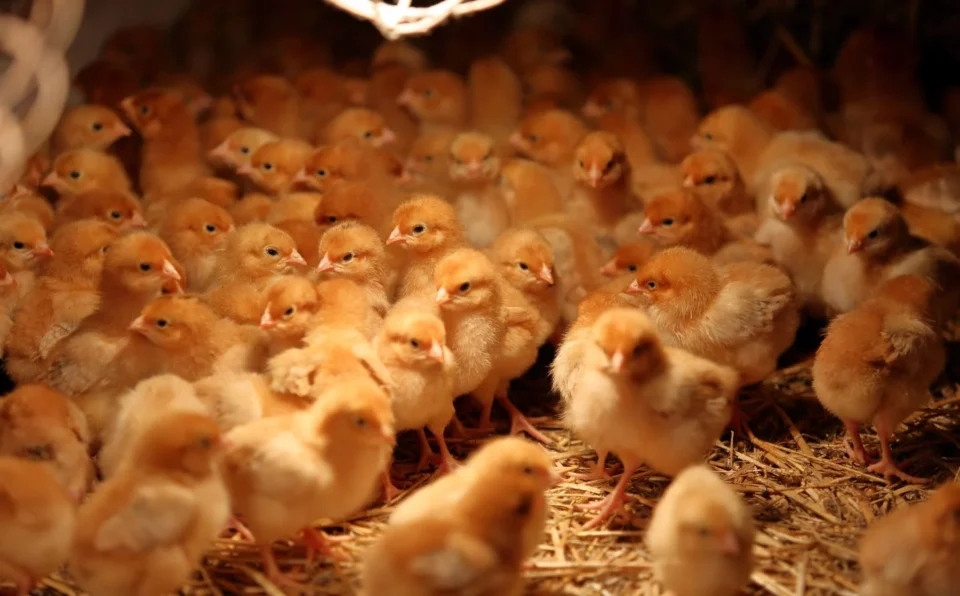Since the introduction of in-ovo sexing technology in Europe, driven by bans on male chick culling in Germany, France, and Italy, more hatcheries are adopting this method to alleviate societal pressure.
Innovate Animal Ag’s Q3 2024 In-Ovo Sexing Roundup explores the latest developments in this technology and its implications for consumers and producers worldwide.
Business Developments
Agri Advanced Technologies (AAT) announced this quarter that they will launch their in-ovo sexing system, Cheggy, in two US hatcheries in 2024. Jörg Hurlin, the founder and CEO of AAT, expressed his enthusiasm about this milestone, stating that the launch represents a significant advancement in non-invasive in-ovo sex determination technology. He emphasized that this is not just a technical innovation but a transformative approach that aligns with the increasing demand for welfare and sustainable practices in the poultry industry.
AAT also reported the successful installation of a Cheggy Zoom machine at the Hatchery van Gent and another at Lohmann Ankum hatchery.
Prominent specialty egg producer NestFresh announced plans to be the first to implement in-ovo sexing technology in the US. The company has already placed orders for in-ovo sexed chicks with a US hatchery, with plans to roll out this technology across their entire egg line. These eggs are expected to hit the market by mid-2025, accompanied by third-party certification indicating they were produced by in-ovo sexed hens.
The Advantages of In-Ovo Sexing
In-ovo sexing enables egg producers to sort male and female embryos early in the incubation process, allowing only female chicks to hatch. While the technology was originally developed to eliminate male chick culling, it also holds the potential to enhance welfare, sustainability, and efficiency by enabling additional practices such as on-farm hatching.
In Switzerland, a task force made up of poultry industry stakeholders has announced that the country’s two main hatcheries, Animalco and Prodavi, will adopt Orbem’s in-ovo sexing machines in 2025. Established in 2020, the task force includes the primary producer association, both hatcheries, and Aviforum, a leading poultry research center. By opting for in-ovo sexing technology, the Swiss poultry industry is effectively phasing out chick culling voluntarily, without government intervention. Orbem has also indicated plans to install a machine in a new hatchery in Sirevåg, Norway, where there are currently no government restrictions on culling.
New Collaborations and Research
eggXYT, a company specializing in in-ovo sexing technology, announced a strategic investment from Amuse Inc., a fully integrated Japanese egg company that operates breeding farms, layer farms, hatcheries, and egg marketing. This partnership signifies confidence in eggXYT’s technology, which employs genetic editing to attach a fluorescent marker to a sex chromosome in male embryos. This genetic marker can be detected by eggXYT’s scanner as the eggs enter the hatchery. CEO Yasuo Akagi stated that Amuse “recognizes the transformative potential of eggXYT’s technology and looks forward to implementing it to make the egg industry more ethical and sustainable.”
Market Insights
Innovate Animal Ag recently released an update on its In-Ovo Sexing Market Penetration Report, indicating that as of April 2024, approximately 78.4 million of the 389 million hens in the European Union were sexed in-ovo, achieving a market penetration of 20%. This marks a significant 5% increase from September 2023, when the market share was just under 15%.
A new study published in Computers and Electronics in Agriculture suggests that hyperspectral imaging, combined with advanced AI techniques, could enhance the effectiveness of in-ovo sexing. Researchers from Nanjing Agricultural University in China, along with former Google and Apple talent, analyzed hyperspectral images using Google’s Transformer and Vision Transformer attention architectures. Transformer-based models have been behind many breakthroughs in AI, including large language models.
Hyperspectral imaging is already utilized by AAT, the current market leader in Europe, although its technology, which examines feather color within developing eggs, is limited to brown layers. While this method is relatively cost-effective, it has restricted applicability in markets like the US, which primarily use white layers.
The AI model discussed in the recent study reportedly demonstrates 95% accuracy for both brown and white layers by day 10 of incubation. Although the researchers did not specify which sex-identifying features the model detects, this method could provide significant competitive advantages over existing techniques. It remains to be seen if this research can be replicated, particularly in commercial settings, and whether any current in-ovo sexing technology companies are positioned to scale this new approach.



